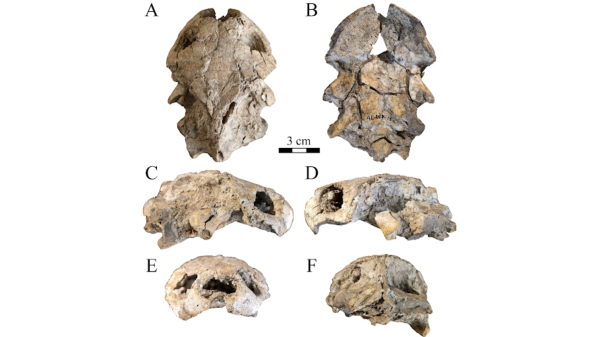ASU researcher discusses what the new Zika test could mean

ASU assistant professor Alexander Green speaks in the lab while holding one of the new paper-based diagnostic tests for the Zika virus.
Researchers today, including two from Arizona State University, announced a new test for the Zika virus that costs $1 per test, shows results in two hours and can be used anywhere in the world. The test could help world health organizations quickly track and contain an outbreak of the mosquito-born disease using blood, urine or saliva samples. The new test was announced in the scientific journal Cell.
ASU lead researcher on the project, Dr. Alexander Green, an assistant professor at the Biodesign Center for Molecular Design and Biomimetics and in the School of Molecular Sciences, answered some questions about the new test.
Question: How does this test help us contain Zika?
Answer: It gives us a very simple, low-cost and accurate method of finding Zika infections. If we know exactly where people are getting infected, we can focus our efforts on controlling those mosquito populations carrying the disease and make sure that people in the area take precautions to avoid getting bitten. These combined efforts will help stop the disease from spreading.
Q: What are the advantages of the new test?
A: The new test is very cheap, fast and simple to use. It costs about $1 per test and can provide results in two hours. You read the test results through a color change on a piece of paper, much like a home pregnancy test. Unlike a lot of diagnostic tests, it does not require refrigeration and has good shelf life. You can mail it out to a remote clinic, and they can use it up to a year later without having to worry about storing it in a fridge or freezer.
Q: How does the test help us track Zika, given that it likely will be administered in remote locations? Can you briefly walk us through how that works?
A: The test is so inexpensive and simple that we can administer it widely and get information from large numbers of patients that are dealing with the infection. With a more expensive test that requires a lot more equipment to run, you will simply not be able to reach the same number of patients. You end up getting much less information. Our test is designed to work with really limited equipment needs, so it can be deployed in resource-scarce clinics where many diagnostic needs remain unmet.
For a test in a remote location, you would first get a blood sample from a patient, add some of the sample to a test tube that contains enzymes that replicate RNA within the sample, and then add a small drop of the product to the paper-based test that you can read by eye. The main equipment needs are pipettors for handling liquids and a heating block that can hold the samples at two different temperatures while the test is being run.
Q: How accurate is the test?
A: Zika is often incorrectly diagnosed as the closely related dengue virus or vice versa. Our test can distinguish between these two viruses. It can go even further and differentiate two viruses that differ at only a single location in their genetic code. The test also works at the low concentrations of the Zika virus present within the blood. This sensitivity means the test will not provide false-negative results.
Q: Are there other possible uses for synthetic gene networks (diseases that can be detected) using this platform?
A: Our low-cost test can be applied to a lot of different illnesses. Many illnesses can be identified by the RNA or DNA sequences of the viruses or bacteria that cause them or the DNA mutations that lead to a disease like cancer. Our test can be rapidly applied to detect these specific RNA or DNA signatures. So if the genetic code of an illness is known, in a week or so, we can develop from scratch a new test to detect the illness, in much the same way as we did for Zika.
More Science and technology

When facts aren’t enough
In the age of viral headlines and endless scrolling, misinformation travels faster than the truth. Even careful readers can be…

Scientists discover new turtle that lived alongside 'Lucy' species
Shell pieces and a rare skull of a 3-million-year-old freshwater turtle are providing scientists at Arizona State University with…

ASU named one of the world’s top universities for interdisciplinary science
Arizona State University has an ambitious goal: to become the world’s leading global center for interdisciplinary research,…